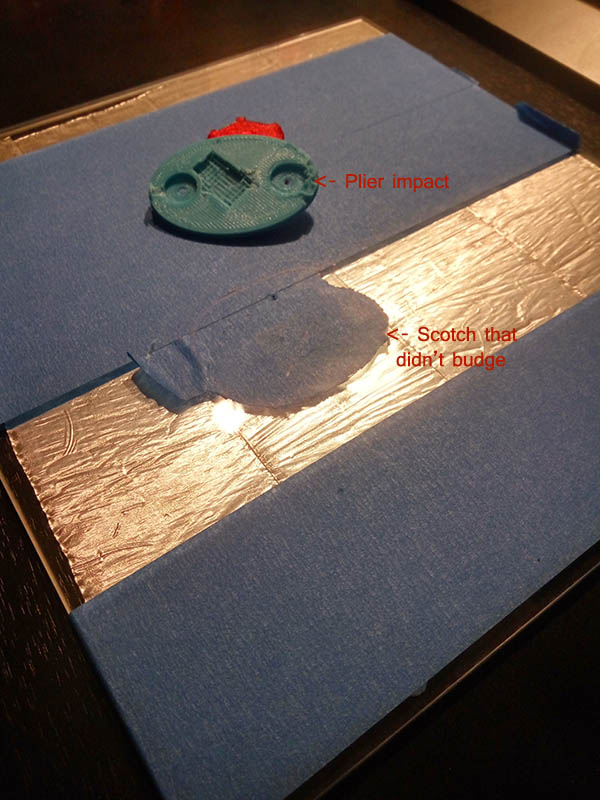I have had problems with items sticking on the build plate, especially when they were big (as they didn't stick well, they corners warped -> all kind of problems).
I also wanted to upgrade my printer (Scratch XYCore-Bowden) to have the ability to use flexible filament so first I modified my extruder motor/cog-wheel so it pushes the filament straight into the Bowden tube (classic modification).
This worked okay for small parts (as was the case with PLA).
The heat-bed seems to flex when heating in an uniform manner so it's not perfectly flat which means the Marlin 3-point test doesn't work out.
To alleviate this I added a borosilicate glass on top of the heat bed for perfect 'flatness', but the inductive sensor didn't reach through those extra 3 mm of the glass, so I bought another inductive sensor (old was 4 mm LJ12A3-4-Z/BY PNP with a voltage divider, new is 8 mm NPN) and this started to function somehow:
As the sensor doesn't sense the surface (or the glass at all), but senses the heatbed under, which isn't either flat nor stable according to temperature, I added aluminium tape under the glass pane. This actually works perfectly well!
Now I am able to tune in the first layer distance really well, but still the flex filament floats around on the glass so I added blue painters tape which makes it work, very very well!
All well for flex printing!
Switched to PLA (which always worked okay whatever some small errors in print height, and not too wide items) and I have all pieces sticking to the bed in a manner I just cant get them off...
They get big scratches from the pincers, get broken, etc.,...
I have tried:
Pincers (works for some items, doesn't work for some. About always makes marks);
Ripping off the blue painter tape (the tape was removed everywhere except where the item was stuck. Plus now I have to add new tape);
Chuck the build plate in the freezer for an hour. It helps a lot but:
- Still not easy to remove without making marks;
- It's a serious hassle;
- It's also a time waster.
My question is: How can you both reliably print and remove your item without breaking it?
Little image of the last part that I broke (the square impact in the middle is after ripping of the "hook" from this hanger when I tried to detach it from the heat bed), as it didn't work at all I had to put it in the freezer for an hour or so to be able to remove the rest:
